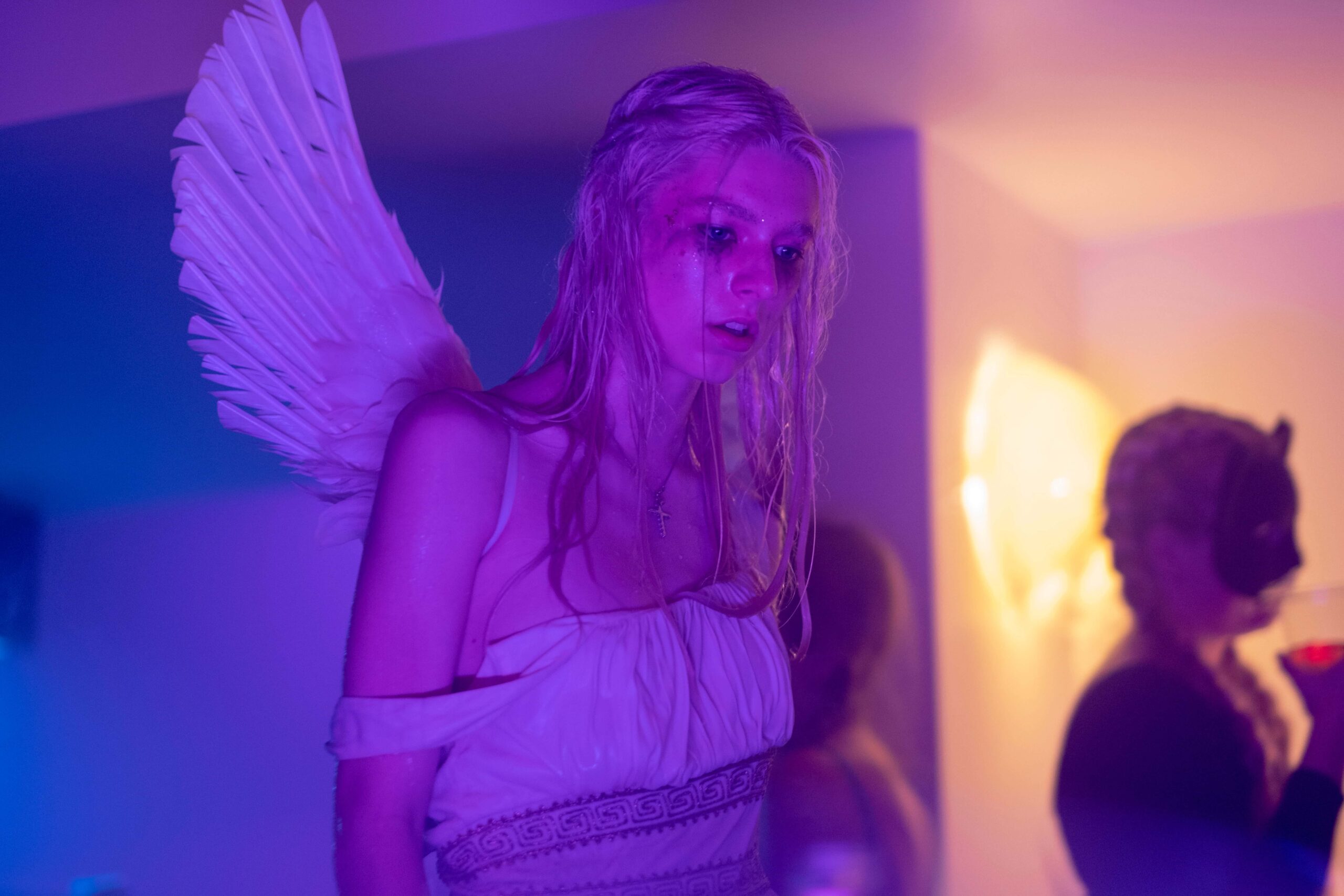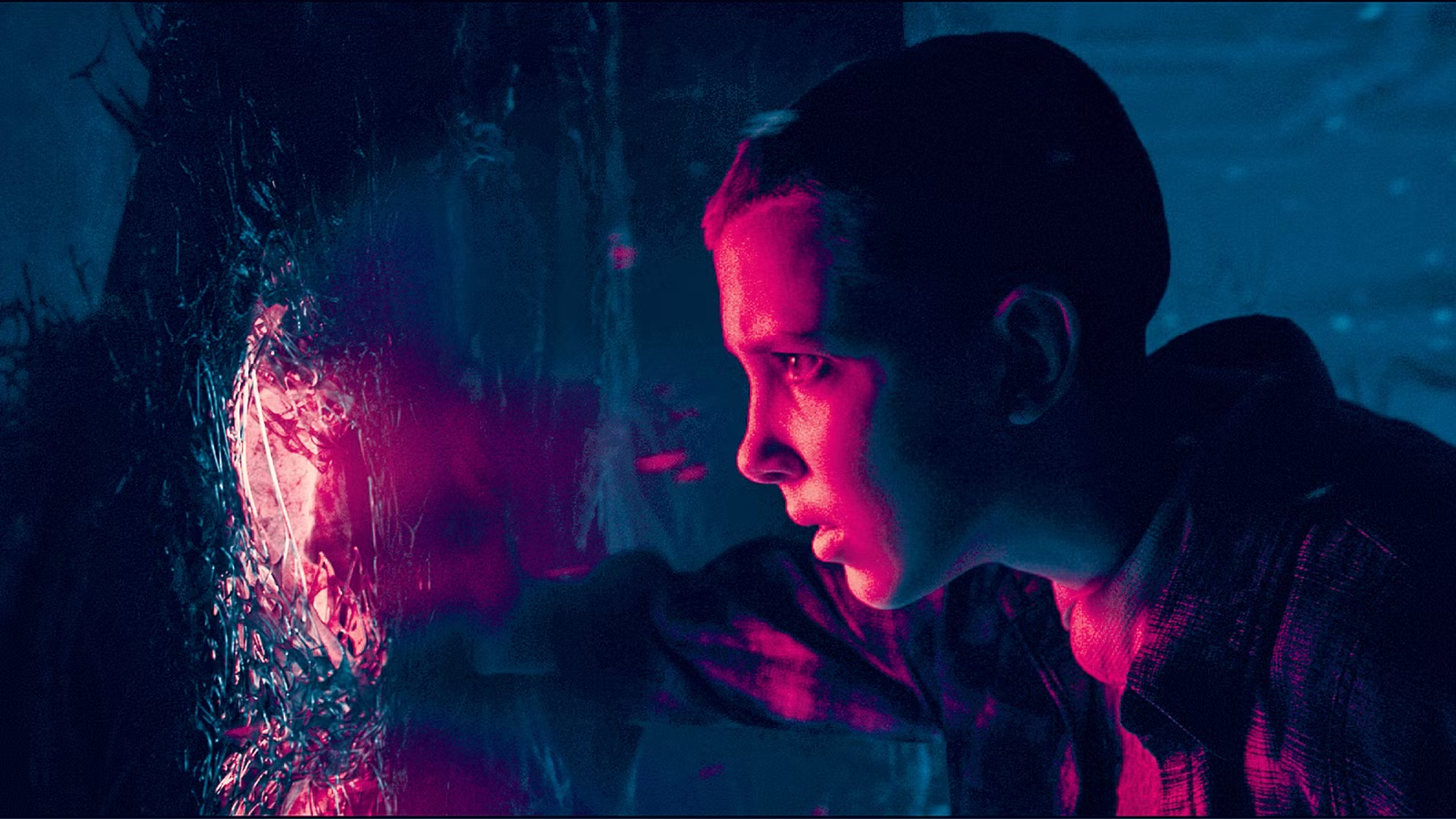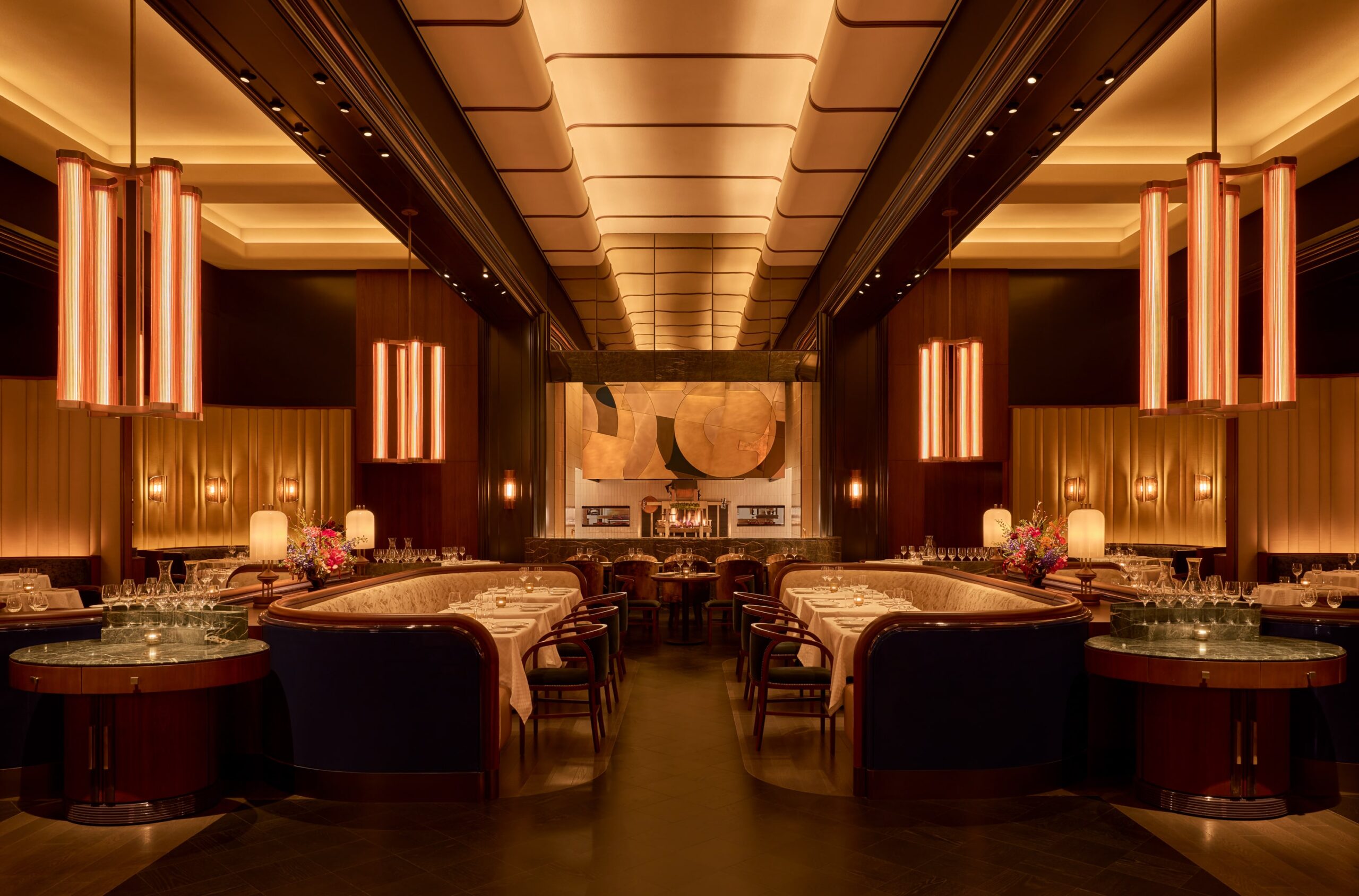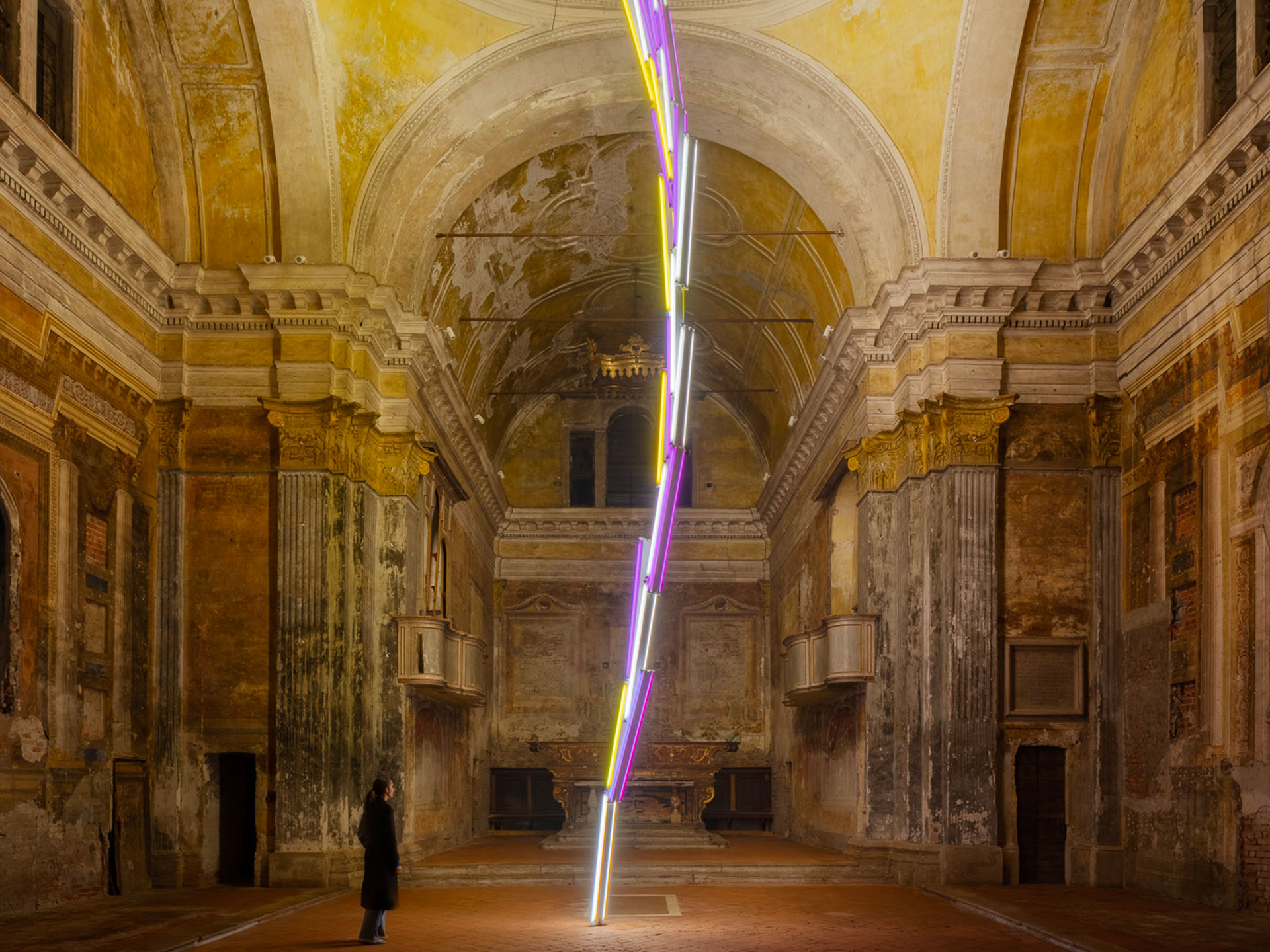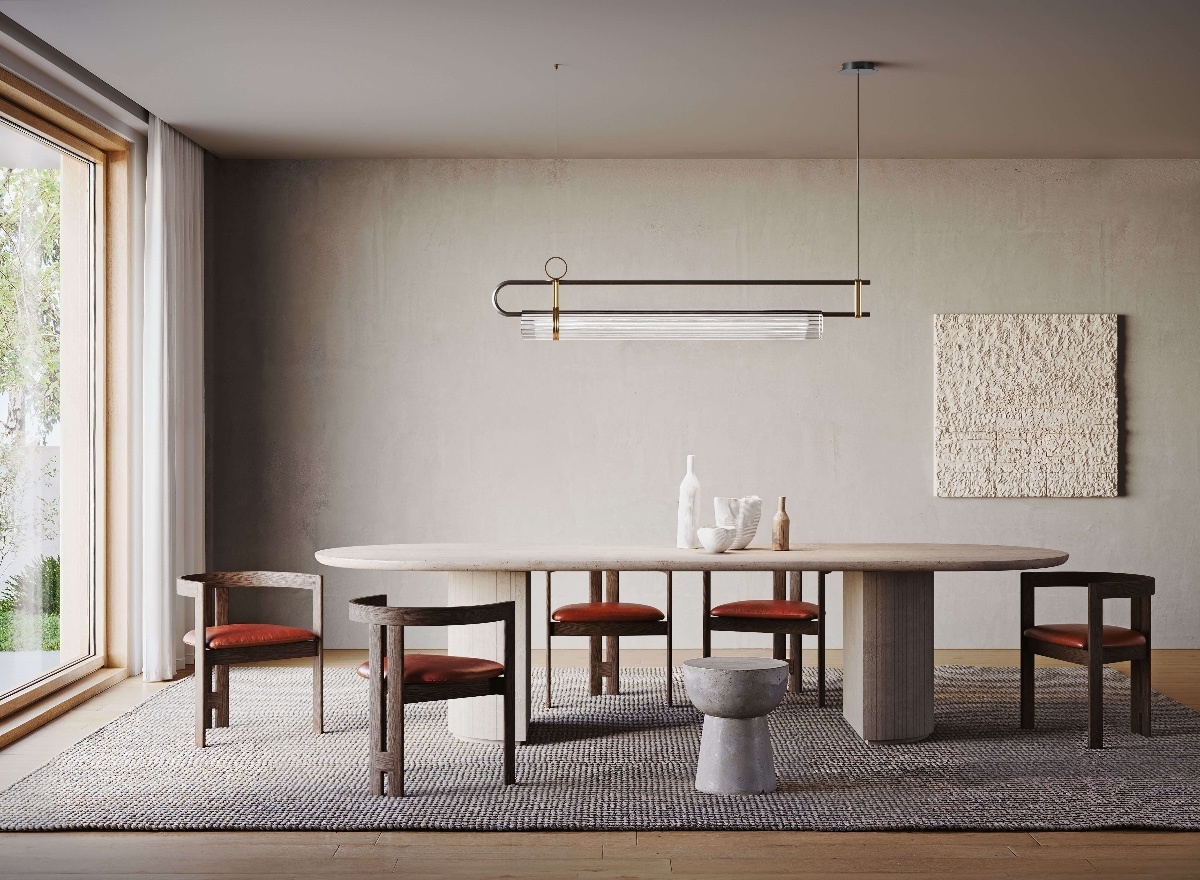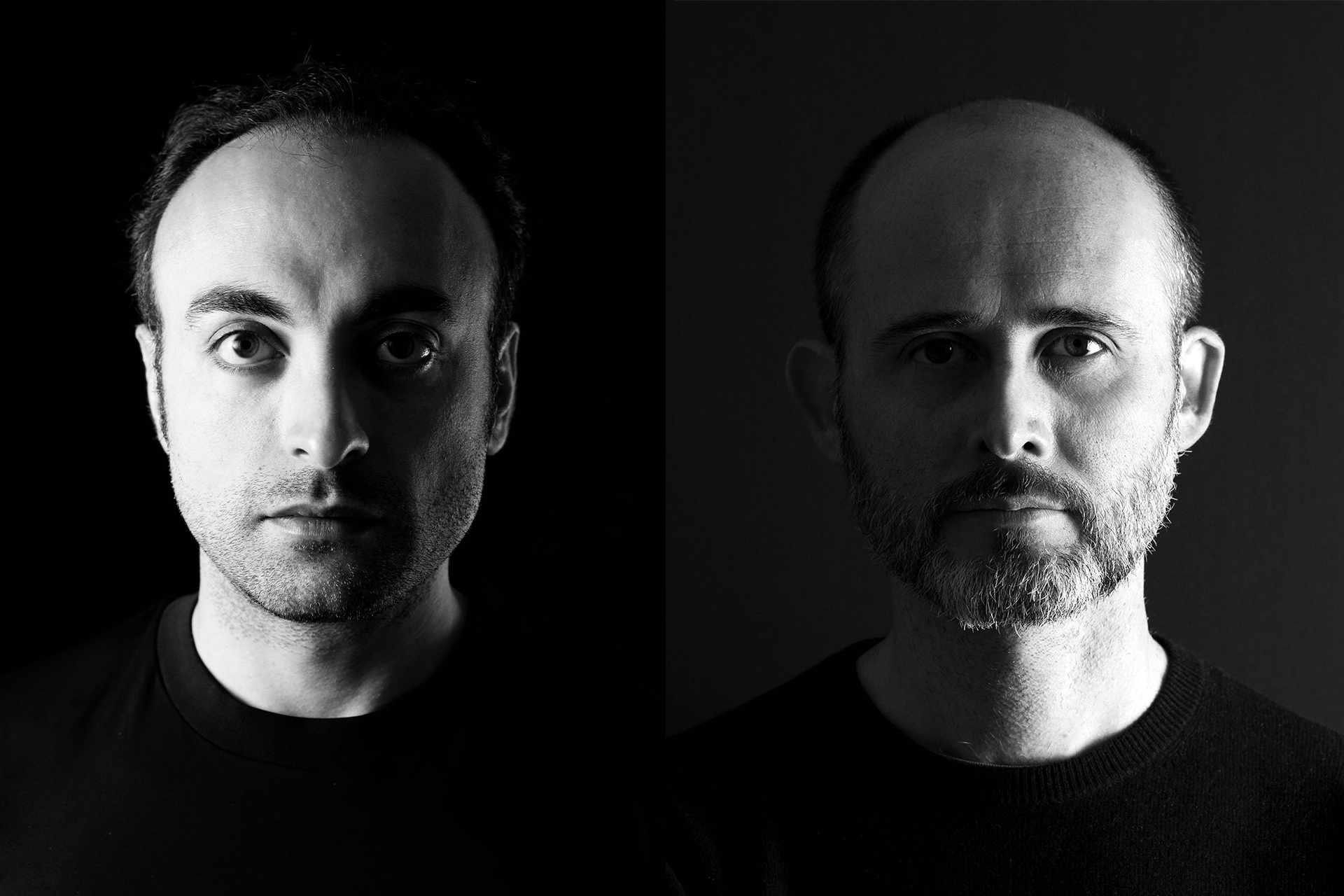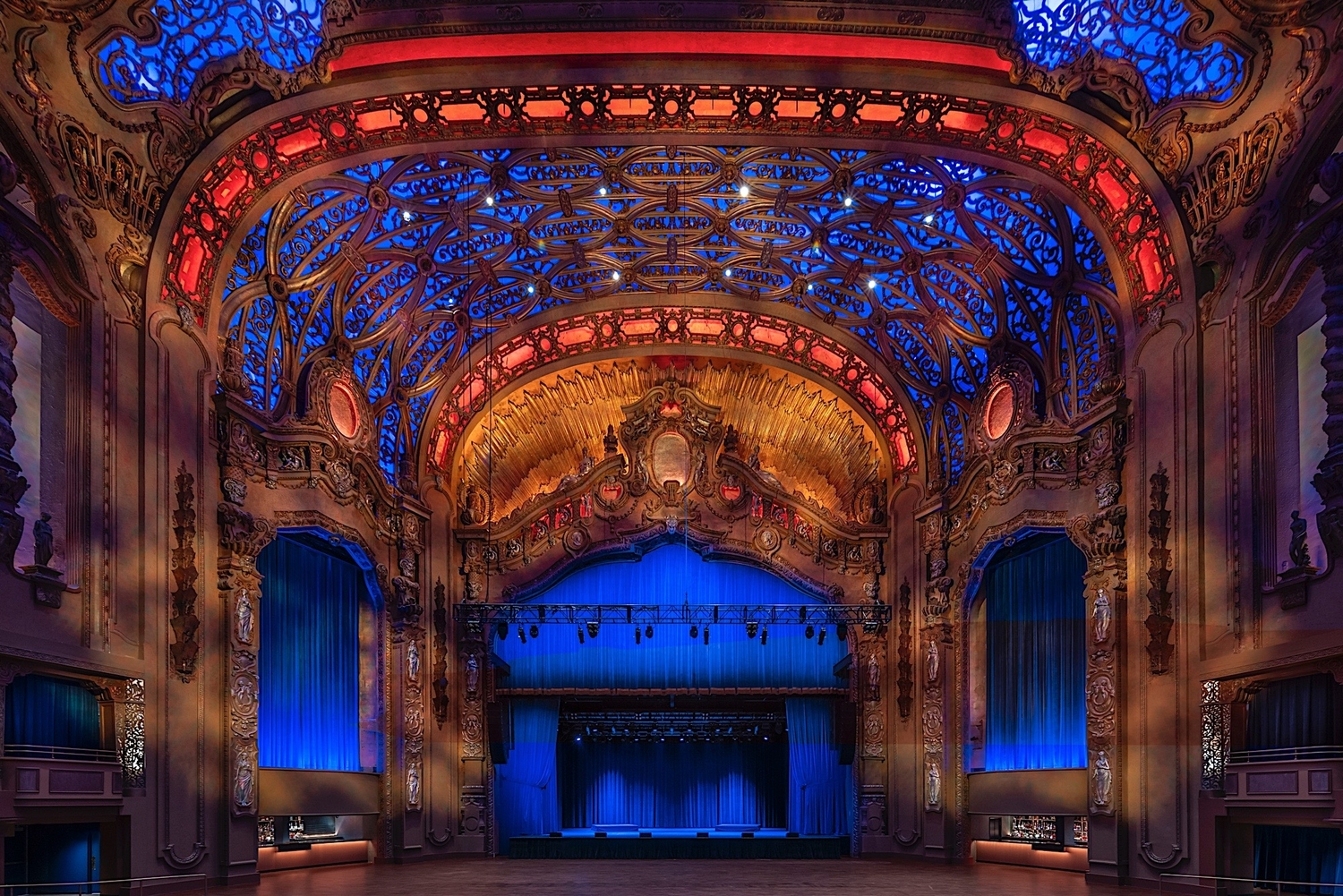Cover photo:
Bambino, Paris — interior view of the vinyl bar-restaurant designed by Fabien Lombardi, ph by Valerio Geraci
For the past decade, Europe has embraced a new kind of space: listening bars. No noise, no distractions—just music, curated sound systems, and deep listening. This trend reflects two things: first, a shift in post-pandemic social behavior—people have rediscovered the pleasure of sharing even solo activities in communal settings (as seen in the rise of run clubs). On the other hand, they signal an evolution in electronic music consumption. No longer limited to dance floors, subgenres invite focused listening in intimate environments, requiring silence and stillness to be appreciated.

The origins of listening bars
The idea of the listening bar dates back to Japan in the late 1920s, with the birth of jazz kissa: cafés where customers could enjoy jazz records, then a luxury few could afford.
After a pause during the war, these venues returned in the 1960s, in parallel with Japan’s rise as an audio tech powerhouse (think Technics, Yamaha, Pioneer). Modern Hi-Fi culture, in many ways, has Japanese roots, and these early listening clubs were its true incubators.
Chasing the perfect sound
High-fidelity audio emerged from the desire to reproduce music as authentically as possible, minimizing distortion and detail loss. It’s what Greg Milner calls the “hunt for perfect sound” in Perfecting Sound Forever: a journey marked by a tension between technical accuracy and subjective taste. While engineers refined formats to replicate live performance, every improvement raised new questions: What counts as authentic? How much artistic intervention is too much?
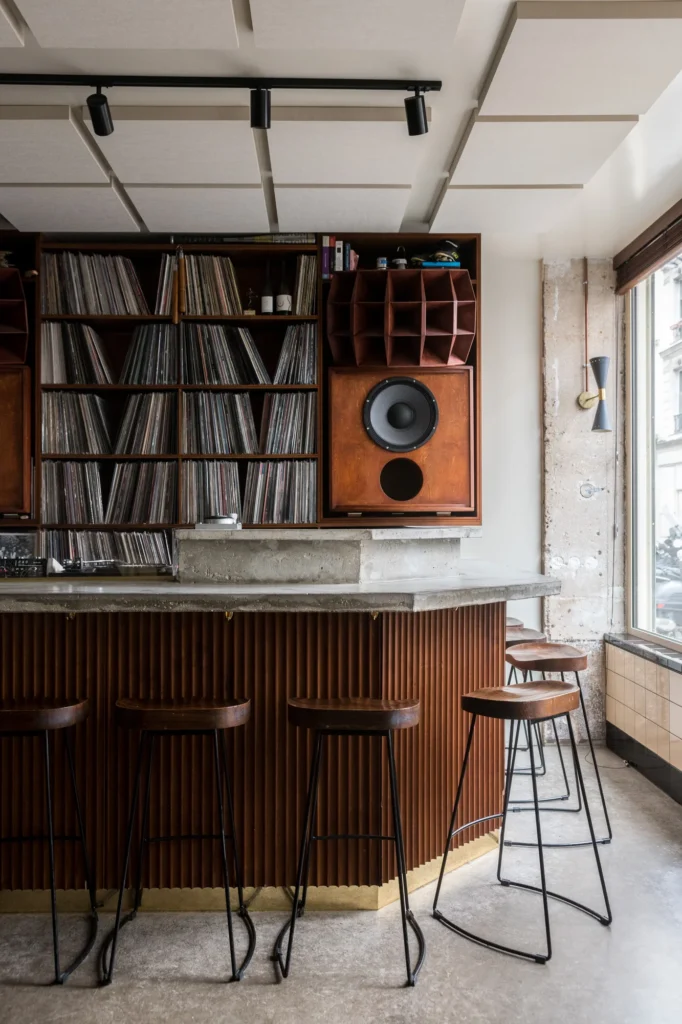
Listening bars as elevated sound experiences
Today, the listening bar is an aesthetic experience. While early venues prioritized a curated soundscape by the owner and discouraged talking, today’s spaces are more visually curated and socially engaging. Social media has transformed them into photogenic destinations where the aesthetics often rival the sound, but the original spirit still lingers beneath.
Designing for the ear and the eye: the listening bars purpose
While the design philosophy of listening bars is rooted in acoustic performance, the visual dimension is now carefully considered as well, contributing to the overall experience through a dialogue between design, sound, and interior decor. The design of the audio systems themselves has become an integral part of that experience. Custom speakers are conceived not only with sound quality in mind, but as sculptural objects that define the visual identity of the space.
At Space Talk in London, for instance, the sound system features speakers created by the specialist company Friendly Pressure in collaboration with designer Lewis Kemmenoe. In general, the bespoke sound system represents the highest expression of an approach that blends visual and acoustic functionality with aesthetics, often becoming a key branding element of the venue itself.
Lighting design in listening bars
Lighting in listening bars acts as an architectural narrator. Designers use adaptive lighting systems that shift in intensity and color temperature throughout the day. At Space Talk as well, a large ceiling light—described as “a window to the sky”—shifts gradually as night deepens, transitioning from white to a deep red reminiscent of a sunset.

Warm color temperatures (2700–3000K) foster intimacy and comfort, with cooler tones applied strategically to enhance visual contrast. The goal? A cocoon-like effect—immersive, soft, and welcoming.
Lighting becomes a sensory tool, shaping perception and guiding movement. It enhances materials, defines zones, and mirrors the acoustic warmth of the space. One popular strategy is layering: ambient light sets the tone, while accent lighting highlights architectural details. Another is zoning: each area is lit according to its function—pendant lamps above the bar encourage conversation, while soft, indirect lighting in the lounge supports focused listening.
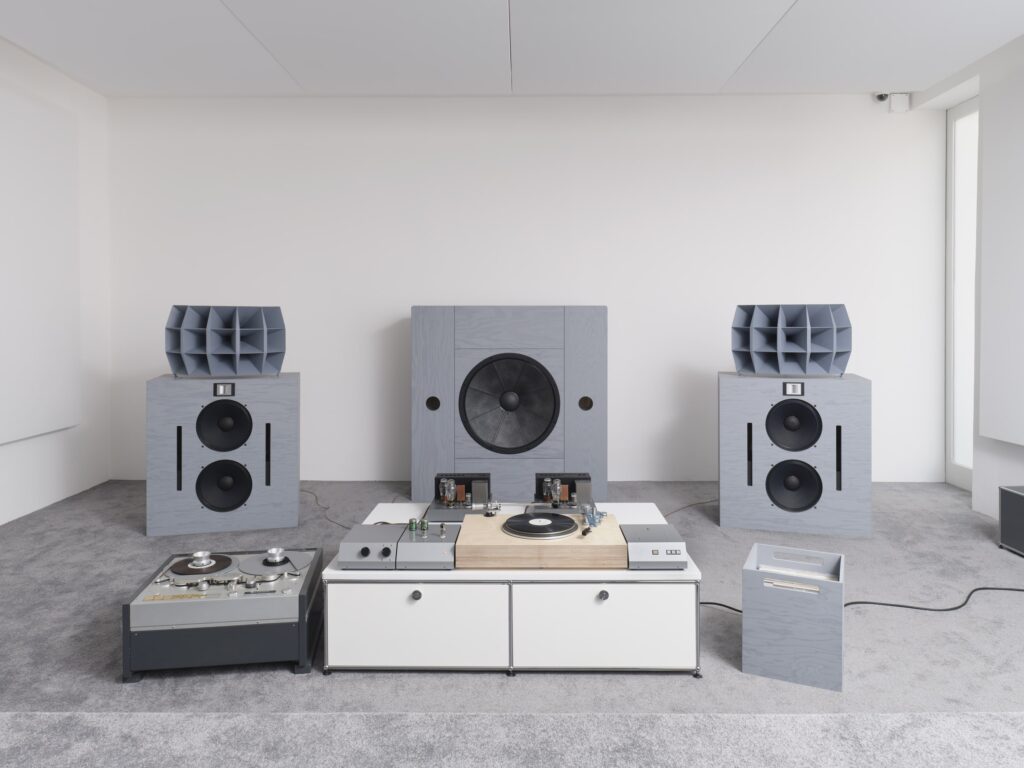
What’s next for listening bars?
Listening bars are evolving toward increasingly holistic design approaches, integrating sustainability, technology, and sensory experiences. We’re beginning to see lighting systems that respond to music, turning these venues into small laboratories of innovation, showing how design can elevate singular experiences. There’s plenty of potential to explore, as long as aesthetics remain an integration—not the ultimate goal—and listening stays at the forefront.
